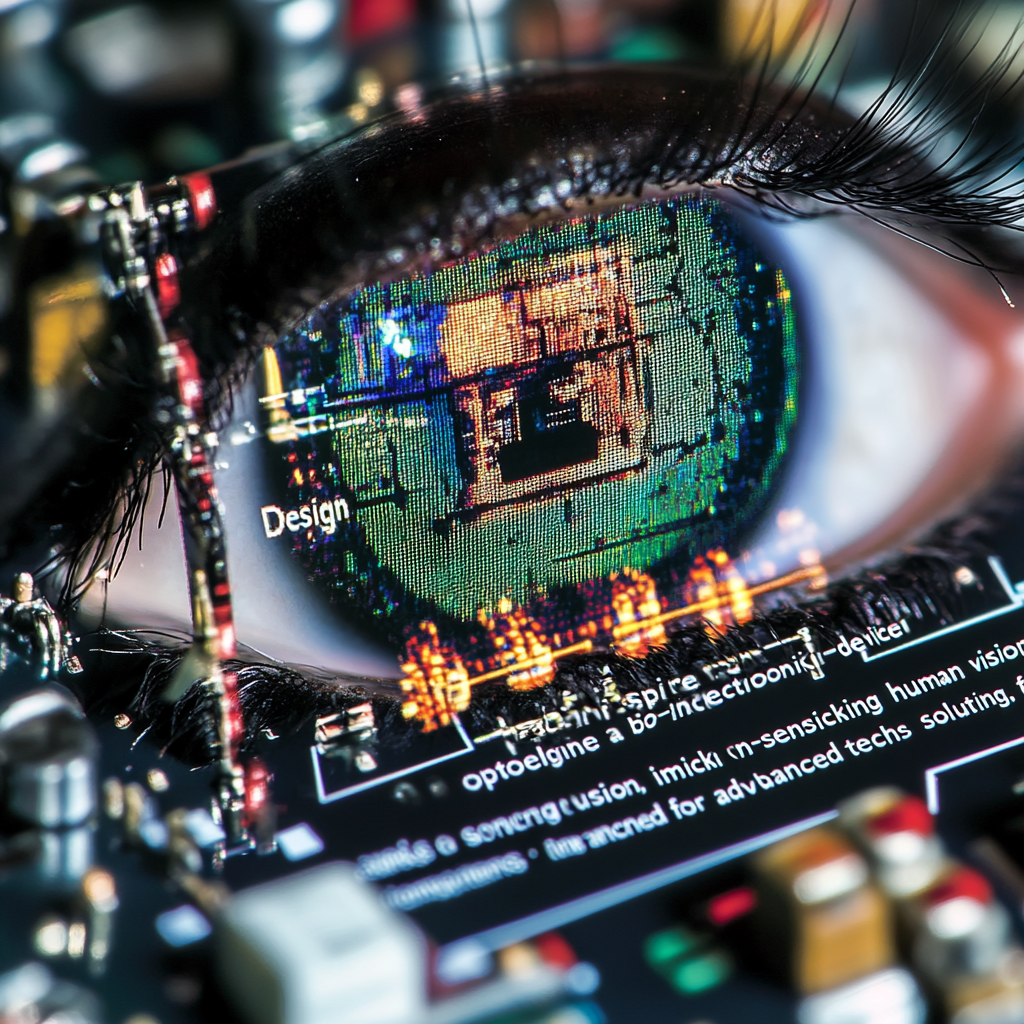
Bio-Inspired Optoelectronics for Versatile In-Sensor Data Processing
In the never-ending saga of human innovation, where creativity meets technology, scientists have embarked on a quest to replicate one of nature’s most astonishing feats — human vision. Imagine a world where machines possess the ability to see and perceive just like us, and you’ve just stumbled upon the cutting-edge realm of optoelectronic devices. Buckle up as we dive into this mesmerizing journey of mimicking the intricate human visual system through the magic of optics and electronics, a.k.a. optoelectronics!
Let’s take a moment to appreciate the human visual system. It’s not just a simple camera that captures images; it’s a magnificent hierarchical marvel that processes visual input with stunning elegance. We’re talking about a complex interplay of retina, photoreceptors, and neural networks that work in concert to transform light into the vibrant tapestry of colors we perceive. Yes, the human eye and brain are like the ultimate power duo, deciphering subtle shades and movements that our surroundings throw at us.
Now, enter the brainiacs at Tsinghua University who have taken a giant leap forward in developing an optoelectronic device that’s practically channeling our stunning visual abilities. Imagine a device built from an array of optoelectronic memristors (OEMs). These nifty little contraptions are game changers, designed to store and process information while flaunting the ability to replicate various processing levels of our visual system. We're not just talking about a one-trick pony; there are multiple modes to frolic in, mimicking everything from basic light registration to complex visual perception.
But how does this miraculous device operate? Picture a grand orchestra of light and electricity working harmoniously together. The OEM array plays with charge density in oxygen vacancies — it’s a tongue twister, but the result is nothing short of spectacular. Researchers employed sophisticated techniques such as differential phase-contrast scanning transmission electron microscopy to achieve this feat. The testing phase was equally electrifying, with the device being put through its paces in real-life visual tasks. It tackled image sensory pre-processing, object tracking, and even human motion recognition with remarkable accuracy. For instance, the device turned an 85.7% recognition rate into an impressive 96.1% when processing images in the NV-OEM mode. It tracked objects with a dazzling 96.1% accuracy using dynamic modes and nailed human motion recognition at 91.2%. Talk about tech riding on the coattails of biological brilliance!
But hold onto your hats; it gets even better. The energy efficiency of this device is enough to make anyone swoon. It consumes over 20 times less energy compared to your run-of-the-mill graphics processing units (GPUs). In a world where energy concerns loom large, this is a breath of fresh air. The researchers are going one step further, contemplating enhancements such as transparent materials for the OEM’s top electrode to amplify light absorption rates. This means that the device might just keep getting smarter — and cheaper to run!
And who doesn’t love the idea of versatility? This technology has tentacles reaching out into an array of groundbreaking applications. First up, let’s talk about artificial retina biotechnology. The potential for creating devices that mirror human eye function could spell salvation for those grappling with visual impairments due to damaged retinal cells. The ability to replace or rejuvenate these cells could be revolutionary.
Then there's the tantalizing prospect of battery-free camera technology, a dream many filmmakers and content creators would cherish. With its roots in perovskite materials, akin to solar cells, this device could harvest power while soaking in light, eliminating the need for batteries and simplifying the photo-capturing process.
Now, cast your gaze upon advanced computing. This isn’t just about being flashy; integrating sensing, memory, and processing functions into a single unit could redefine our approach to computing. Imagine a future where devices can emulate the hierarchical information processing of our brain — this could pave the way for computing systems that are not just faster but also more intuitive and adaptive.
Here’s the kicker: we’re only at the tip of the iceberg. The landscape of technology, particularly when it intersects with biology, is blossoming faster than a field of wildflowers in springtime. Each discovery leads to another, creating a lush tapestry of potential that’s as awe-inspiring as it is daunting. We’ve seen how nature acts as a mentor in our tech advances, but understanding it is just the beginning. As we stand on the brink of these advancements, it’s hard not to feel a tingling electricity in the air, whispering promises of a thrilling future.
And so, as we spectate this grand performance of innovation harmonizing with our biological marvels, we can take solace in knowing that the fusion of optics and electronics is more than just a fleeting trend. It's the dawn of a new age where machines and human intelligence might just walk hand in hand into the future.
If you want to stay informed about the exploding world of neural networks and automation, why not hop on this knowledge train? Subscribe to our Telegram channel for all the latest updates on pioneering technologies like these: @channel_neirotoken.
In a world brimming with advancements that make the impossible seem commonplace, there's never been a more fascinating time to dive deep into these explorations. Welcome aboard!

